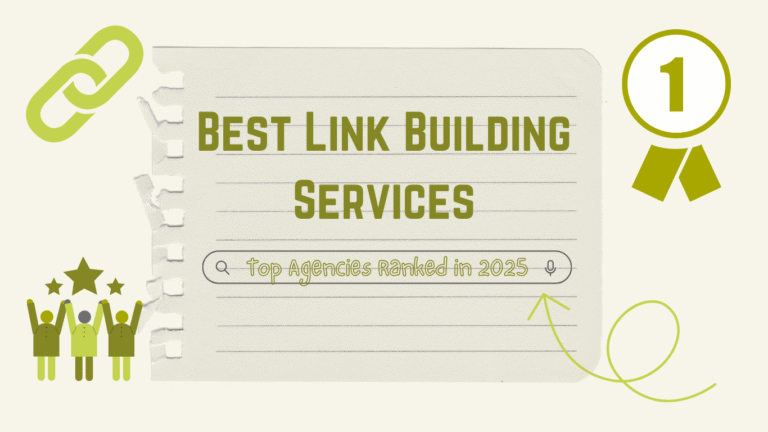Since I started strategizing at Create and Grow, I’ve noticed that the digital world keeps moving toward AI-assisted discovery. Recent studies show that more than 50% of search-driven traffic now comes from AI-powered answer engines like ChatGPT, Gemini, and Perplexity instead of regular search pages. That means that if your content isn’t showing up there, it’s almost impossible to see, which is a missed chance.
What do I want to do here? To share tools I’ve used and tested, along with what worked, what didn’t, and how they compare in terms of cost, so you can improve your AI visibility game without having to try things out.
9 Best Tools for LLM Optimization
| Tool | Main Focus | Pros | Cons | Pricing |
| Surfer (with AI Tracker) | AI Search visibility & SEO content optimization and tracking | Tracks brand mentions across LLMs; Helps make content citable; Various Integrations | AI Tracker only in Scale plan/add-on; no free plan | Essential $99/mo ($79 annually), Scale $219/mo ($175 annually), Enterprise Custom |
| Semrush AI SEO Toolkit (AIO) | AI visibility & technical SEO insights | Clear dashboards, competitor comparison, flags technical SEO issues | Add-on only, cost rises per domain | $99/mo per domain |
| Otterly.AI | Prompt-level tracking & sentiment | Tracks prompts across multiple AI platforms, competitor alerts | New tool, limited SEO beyond AI search | Lite $29/mo (15 prompts), Standard $189/mo (100 prompts), Pro $489/mo (400 prompts) |
| ZipTie.Dev | Simple AI presence tracking | Easy setup, regional/platform breakdowns, wide coverage | Limited features, not built for teams | Basic $179/mo (1,000 checks), Standard $299/mo (3,000 checks), Pro $799/mo (10,000 checks) |
| Peec AI | Generative Engine Optimization (GEO) | AI-first, multilingual dashboards, sentiment tracking | No traditional SEO tools, higher tiers pricey | Starter €89/mo (25 prompts, 3 countries), Pro €199/mo (100 prompts, 5 countries), Enterprise €499/mo (300+ prompts, 10+ countries) |
| Frase.io LLM Optimizer | Content optimization for LLMs | Ensures content is “citable,” checks readability & coverage | Doesn’t track visibility/sentiment, unclear pricing at scale | Starter $45/mo, Professional $115/mo (3 users), Custom available |
| Clearscope LLM | SEO + AI content optimization | Google Docs & WP integration, relevant suggestions | AI features locked to higher tiers, learning curve | Essentials $189/mo (100 pages), Business $399/mo (300 pages), Enterprise custom |
| MarketMuse AI Search Suite | Deep topic clusters & strategy | Great for clusters, supports all team sizes | Steeper learning curve, expensive | Free (10 queries), Optimize, Research, Strategy tiers with tracked topics & briefs (pricing varies) |
| PromptLayer | Prompt management & testing | Visual editor, version control, A/B testing | Geared toward Python workflows, takes time to learn | Free (5,000 requests), Pro $50/mo/user (100k requests), Enterprise custom |
1. Surfer – AI Search (LLM Visibility) & Content Optimization
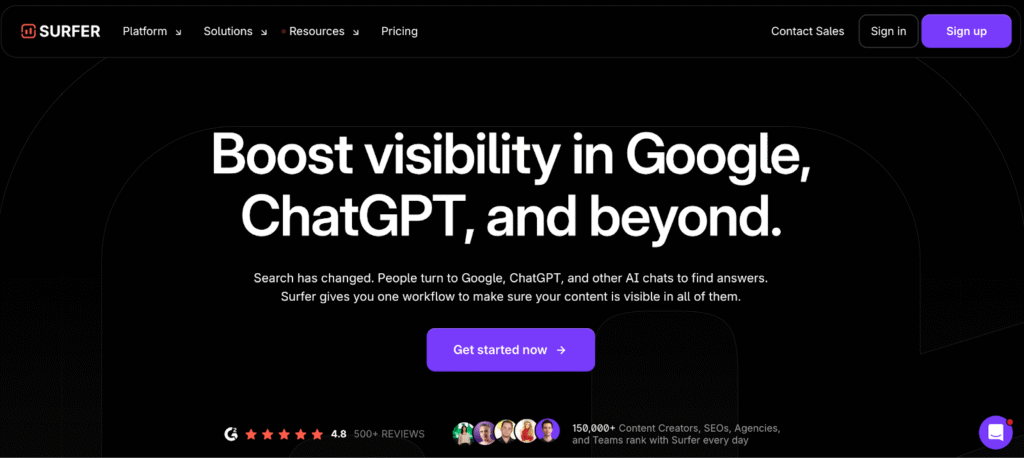
Source: Surfer
When I started exploring how to actually track, measure and improve visibility in AI-generated answers, Surfer stood out as the most complete solution. It bridges classic SEO with LLM optimization – helping you plan, write, optimize and track content that performs across Google Search, AI Overviews, ChatGPT, Perplexity, and Gemini.
Its AI Tracker gives you a clear overview of how your brand appears in AI search – how often it shows up, in which prompts it’s mentioned (and where it’s not!), which competitors are being cited, and which sources dominate citations for your main topics (including how often and where your own pages are being cited) – so you can act strategically both on-page and off-page.
Pros
- Tracks your brand visibility across LLMs like ChatGPT, Perplexity, AI Overviews, and Gemini – highlighting your mentions, competitor citations, sources, and missed opportunities you can act upon.
- Helps you get your own content cited: Combines Content Editor, Facts Tab, and Coverage Booster to make your content accurate, citable, and LLM-friendly.
- Easy to use, integrates with GSC and tools like WordPress, Google Docs, and Zapier.
Cons
- AI Tracker is currently only included in their Scale plan, or as an add-on in the Essential plan (not as a standalone tool).
- Doesn’t offer a free plan, but has a 7-day money-back option.
Pricing
The Essentials plan starts at $79/month, with higher tiers adding more workspaces, seats, and advanced tools.
2. Semrush AI SEO Toolkit / Semrush AIO
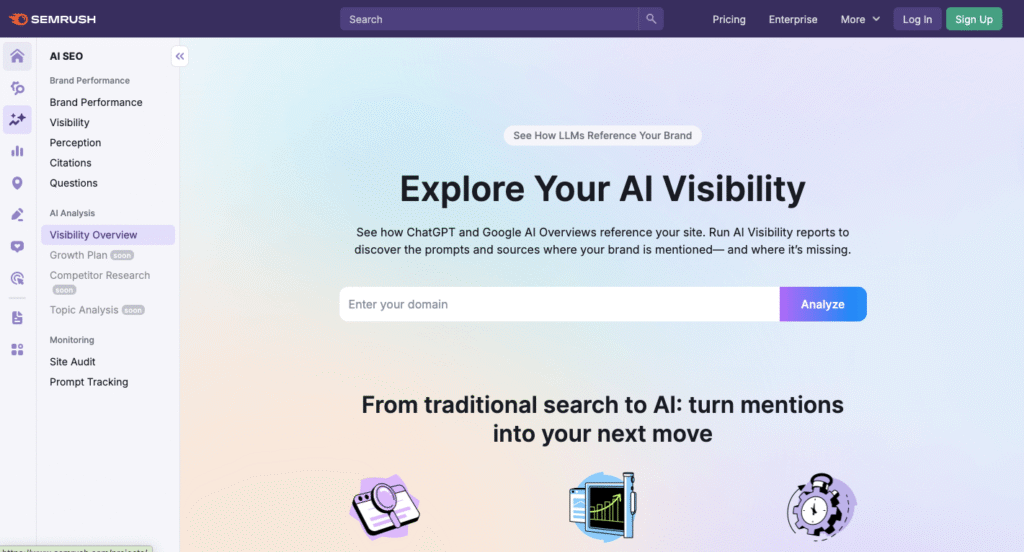
When I wanted to see how Create & Grow looked in AI-generated answers from a distance, I used Semrush’s AI SEO Toolkit. It keeps an eye on your brand across AI platforms like ChatGPT, Gemini, and Google AI Overviews. It shows you scores for visibility, sentiment, prompt performance, and even technical problems that could quietly hurt your ranking.
Pros
- Dashboards that show visibility, share of voice, and sentiment across AI platforms in a clear way.
- List technical problems, such as a missing schema or bad internal linking, that could keep LLMs from “seeing” your content.
- Built-in comparisons with competitors let you know where you stand without having to look.
Cons
- It’s not part of your basic Semrush plan; you have to pay extra for it.
- Adding more than one domain? That makes the cost go up quickly.
Pricing
As an add-on to your Semrush subscription, it costs $99 a month for each domain.
3. Otterly.AI
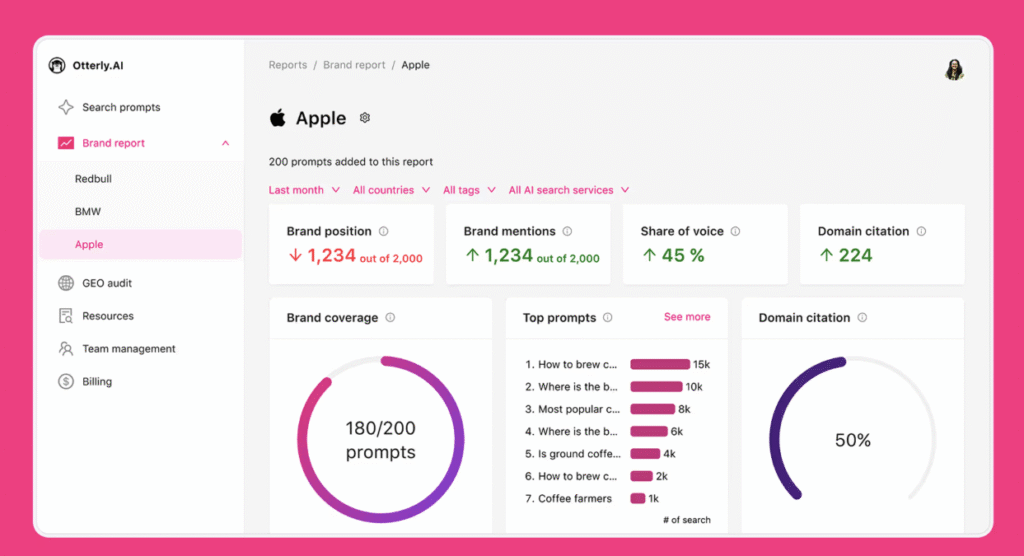
When I needed more detail at the prompt level, Otterly.AI quickly became my go-to. It automatically keeps track of brand sentiment, keyword positioning, and link mentions across ChatGPT, Perplexity, and Google AI Overviews. This way, you can keep an eye on the “conversation” as well as your rank.
Pros
- Not just for keywords, but also for prompt-based tracking, so you can see how prompts work across models.
- Includes a lot of different AI platforms, like Google Gemini, Bing’s Copilot, and others.
- Alerts and comparisons with competitors make it easy to act quickly.
Cons
- Still pretty new, so there isn’t as much feedback from the community as with older tools.
- Limited SEO coverage outside of AI search.
Pricing
Lite: $29 a month for up to 15 search prompts
Standard: $189 a month for up to 100 search prompts
Pro: $489 a month for up to 400 search prompts
4. ZipTie.Dev
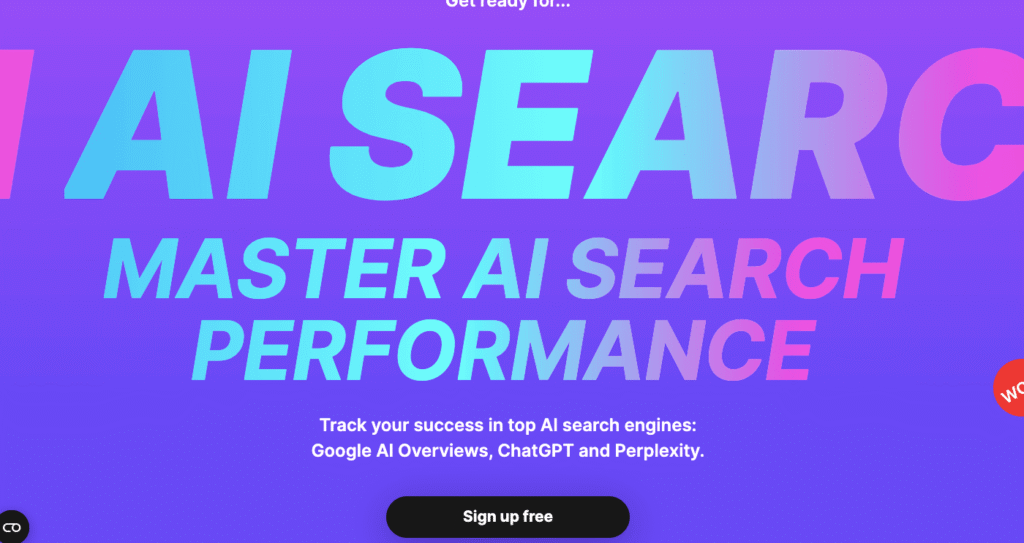
ZipTie is the best choice if you want things to be simple. Dev is a treasure. Simply plug in your brand, and it will start tracking your presence on AI Overviews, ChatGPT, and Perplexity right away, without any setup hassle. It quickly shows topic-level visibility, citations, prompt insights, and even conversation demand.
Pros
- No extra stuff; just a clear picture of your AI presence.
- Includes tracking by region and platform, as well as by prompt.
- Works in a lot of countries, even some that aren’t very well-known.
Cons
- Not made for deep workflows or complicated integrations.
- Not many features for collaboration or business use.
Pricing
Basic: $179 a month for up to 1000 AI search checks
Standard: $299 a month for up to 3000 AI search checks
Pro: $799 a month for up to 10,000 AI search checks
5. Peec AI
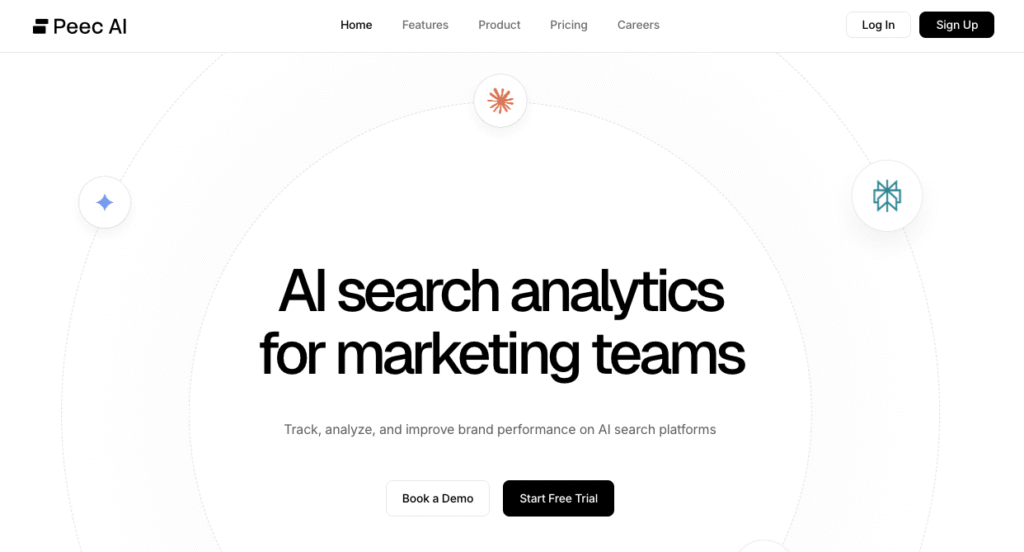
I found Peec AI when I wanted a tool that was made from scratch for Generative Engine Optimization instead of just reusing old SEO tools. It keeps track of how visible a brand is on major LLMs like ChatGPT, Perplexity, Claude, and Gemini. It also looks at sentiment, compares competitors, and gives insights that are specific to each prompt.
Pros
- Not an afterthought, but completely focused on AI search visibility.
- Great for keeping track of how people feel about your brand or seeing if AI is making it look good or bad.
- Dashboards that are fast and real-time work in many languages and regions.
Cons
- Doesn’t have the usual SEO optimization tools; it’s only focused on AI visibility.
- If you use a lot of prompts or teams, higher tiers can get expensive.
Pricing
Starter: 25 prompts and 3 countries for €89 a month
Pro: 100 prompts, 5 countries for €199 a month
Enterprise: 300+ prompts and 10+ countries for €499/month
6. The Frase.io LLM Optimizer

It seemed like Frase’s LLM Optimizer was an AI-based rewrite of old content tools. When I wrote for Create and Grow, it helped me find “citable” stats, answer all of a user’s questions, and make the logic so that LLMs could easily grab and cite it.
Pros
- Checks to see how well your topic meets LLM needs.
- Makes sure you answer every important question that your reader or AI might have.
- It checks for clarity, not just length, by looking at how easy it is to read and how things are linked.
Cons
- Still focused on content; it doesn’t keep track of AI visibility or sentiment.
- Prices aren’t always clear, and enterprise plans can get expensive.
Pricing
Starter: $45/month for 1 user
Professional: $115/month for 3 users and $25/month for extra users up to 9
Custom Plan: Available on Frase.io for a custom number of users
7. Clearscope LLM
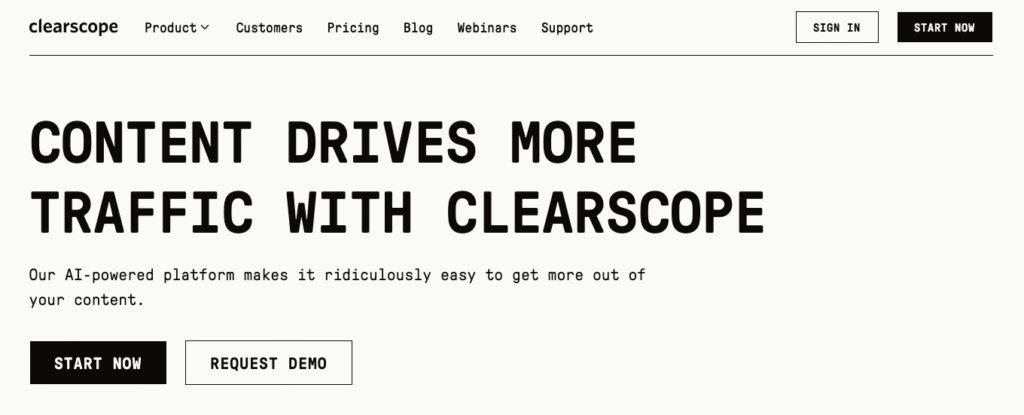
For a long time, people have trusted Clearscope to improve their content. Now that LLM has changed, it adds AI visibility features, making your writing not only good for SEO but also good for AI.
Pros
- Works well with Google Docs and WordPress.
- Suggestions that are right and strike a balance between being relevant and easy to read.
Cons
- Most of the AI features are only available at higher levels. Not cheap.
- It may still take beginners some time to learn.
Pricing
Essentials: $189/month for 100 content inventory pages
Business: $399/month for 300 content inventory pages
Enterprise: You can have a custom enterprise solution at Clearscope
8. The MarketMuse AI Search Suite
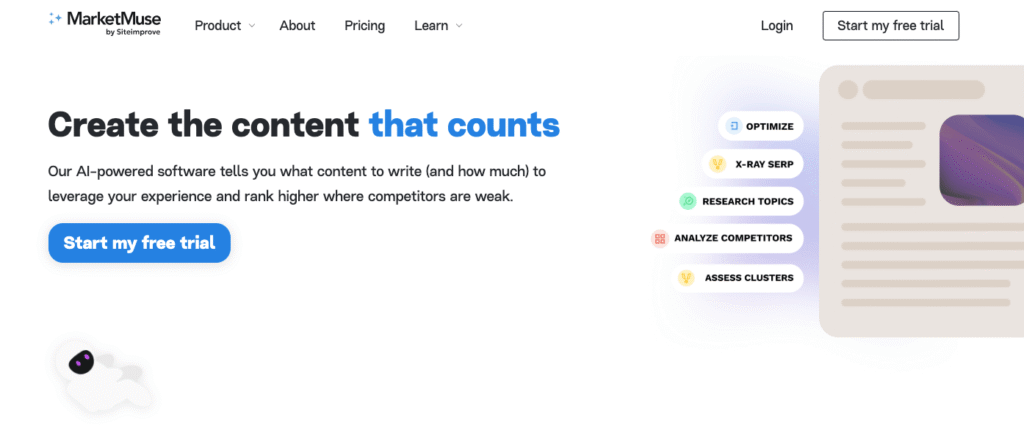
When I need content that isn’t just thorough but also strategically deep, I always turn to MarketMuse’s AI Search Suite. It knows about related topics and creates internal linking patterns that make your content seem like a go-to place for readers and LLMs.
Pros
- Great for making AI-rich content clusters and mapping out the depth of a topic.
- Helps creators of all sizes, from solo writers to big business teams.
Cons
- More difficult to learn, especially if you want to reach your full potential.
- The higher price shows that it has strong features.
Pricing
Free: 1 user and 10 queries per month
Optimize: 100 tracked topics, 5 content briefs, and 1 strategy doc/month
Research: 1000 tracked topics, 10 content briefs, and 3 strategy docs/month
Strategy: 10k tracked topics, 20 content briefs, and 5 strategy docs/month
9. PromptLayer
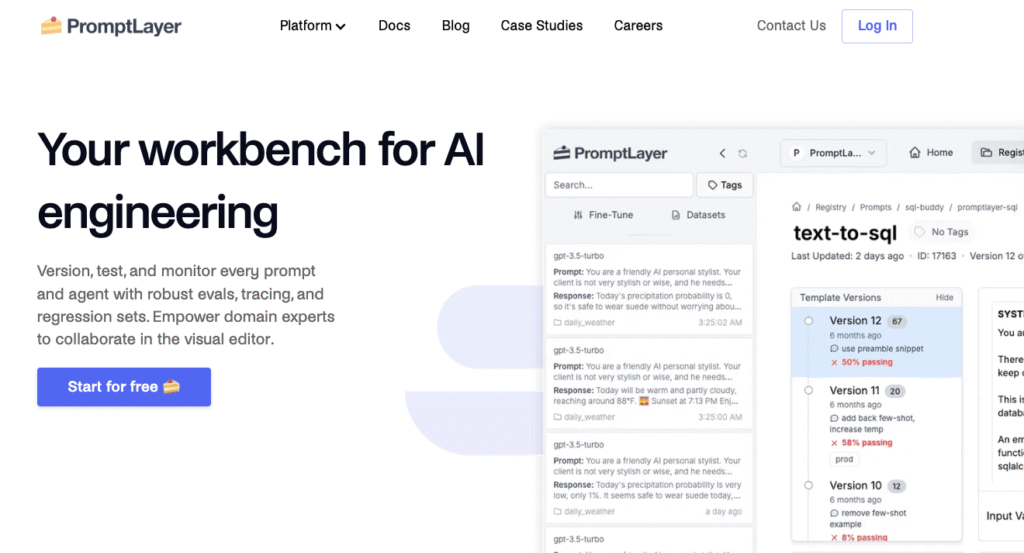
PromptLayer became my go-to place for prompts. It has a visual prompt version control system that lets you compare A/B tests, change prompts in a dashboard, and even look at the results of prompts.
Pros
- No-code visual editing and version registry are great for people who are somewhat tech-savvy.
- Workflows for A/B testing and backtesting are made for experimentation.
Cons
- Mostly for workflows that use Python.
- If you’re not used to modular prompt versions, it might take some time to get used to them.
Pricing
Free Plan: 5,000 requests/month
Pro Plan: $50/month/user, up to 100,000 requests
Enterprise Plan: Tailored plan for large organizations
Conclusion
In the last year, I’ve seen how quickly AI search has changed things. SEO that is based on traditional methods isn’t going away, but if you don’t pay attention to AI visibility, you won’t know where people find brands today. The tools I’ve talked about here, like tracking how visible ChatGPT answers are and running LLMs locally, aren’t just “nice to have.” If you want to grow, you need these things now.
I’ve learned one thing at Create and Grow: making changes early pays off later. Pick a couple of tools that work for you, see how they work, and then add more as needed. It’s not about doing everything at once; it’s about making a smarter, more future-proof plan, one step at a time.
Frequently Asked Questions





